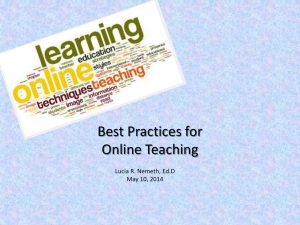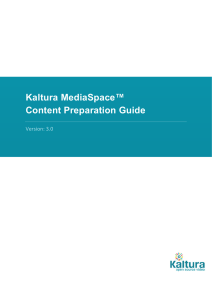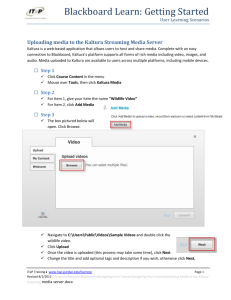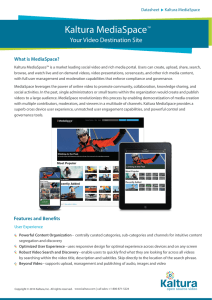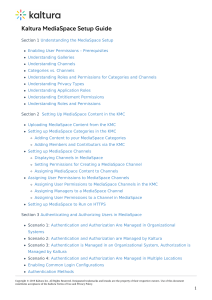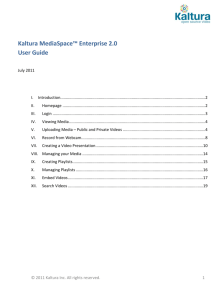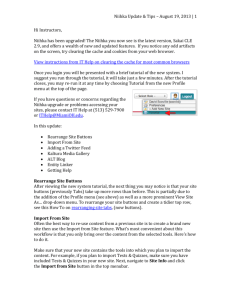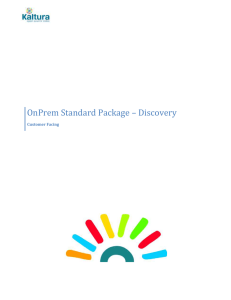4.9.15 Kaltura for TLT-MAG - Information Technology
advertisement
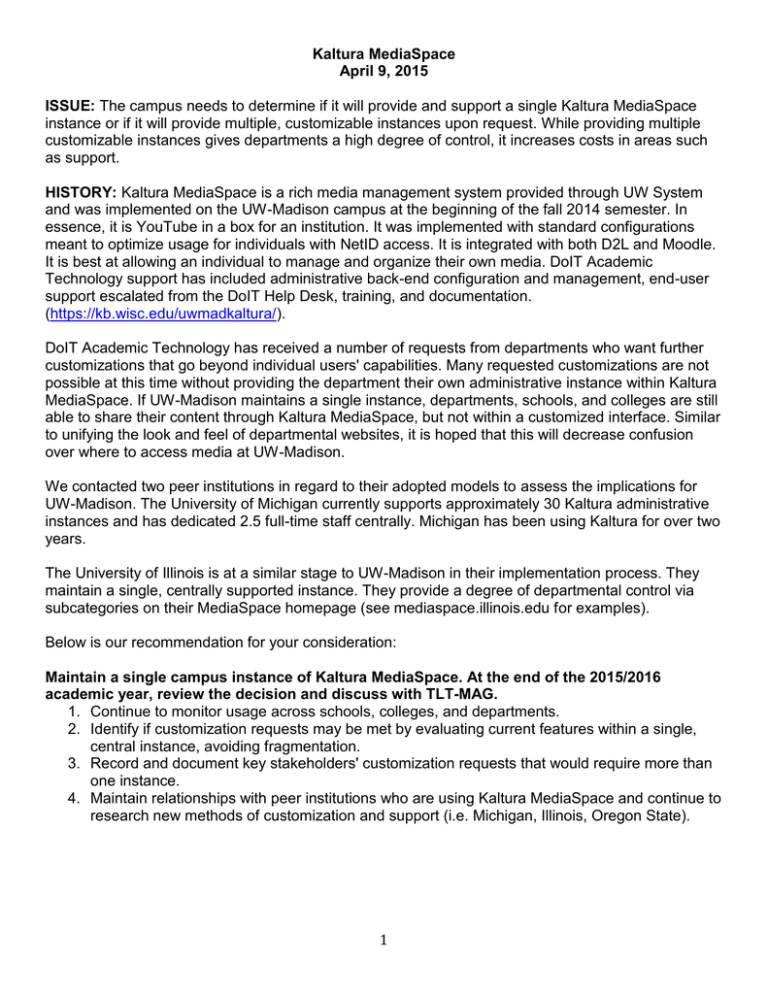
Kaltura MediaSpace April 9, 2015 ISSUE: The campus needs to determine if it will provide and support a single Kaltura MediaSpace instance or if it will provide multiple, customizable instances upon request. While providing multiple customizable instances gives departments a high degree of control, it increases costs in areas such as support. HISTORY: Kaltura MediaSpace is a rich media management system provided through UW System and was implemented on the UW-Madison campus at the beginning of the fall 2014 semester. In essence, it is YouTube in a box for an institution. It was implemented with standard configurations meant to optimize usage for individuals with NetID access. It is integrated with both D2L and Moodle. It is best at allowing an individual to manage and organize their own media. DoIT Academic Technology support has included administrative back-end configuration and management, end-user support escalated from the DoIT Help Desk, training, and documentation. (https://kb.wisc.edu/uwmadkaltura/). DoIT Academic Technology has received a number of requests from departments who want further customizations that go beyond individual users' capabilities. Many requested customizations are not possible at this time without providing the department their own administrative instance within Kaltura MediaSpace. If UW-Madison maintains a single instance, departments, schools, and colleges are still able to share their content through Kaltura MediaSpace, but not within a customized interface. Similar to unifying the look and feel of departmental websites, it is hoped that this will decrease confusion over where to access media at UW-Madison. We contacted two peer institutions in regard to their adopted models to assess the implications for UW-Madison. The University of Michigan currently supports approximately 30 Kaltura administrative instances and has dedicated 2.5 full-time staff centrally. Michigan has been using Kaltura for over two years. The University of Illinois is at a similar stage to UW-Madison in their implementation process. They maintain a single, centrally supported instance. They provide a degree of departmental control via subcategories on their MediaSpace homepage (see mediaspace.illinois.edu for examples). Below is our recommendation for your consideration: Maintain a single campus instance of Kaltura MediaSpace. At the end of the 2015/2016 academic year, review the decision and discuss with TLT-MAG. 1. Continue to monitor usage across schools, colleges, and departments. 2. Identify if customization requests may be met by evaluating current features within a single, central instance, avoiding fragmentation. 3. Record and document key stakeholders' customization requests that would require more than one instance. 4. Maintain relationships with peer institutions who are using Kaltura MediaSpace and continue to research new methods of customization and support (i.e. Michigan, Illinois, Oregon State). 1 Table 1. University of Michigan and UW-Madison Kaltura MediaSpace features University of Michigan University of Wisconsin-Madison MediaSpace Portal Provided Provided Media Upload Provided Provided WebCam Recording Provided Provided Live Streaming Not Provided Not provided (briefly tested - problematic Screen Capture Not Provided Provided Lecture Capture Not Provided Provided Departmental Administrative Instances Provided Not Currently Provided Table 2. University of Michigan and UW-Madison Kaltura MediaSpace statistics (December, 2014) University of Michigan University of Wisconsin-Madison Known Unique Users 2,045 1,301 Unique Videos Viewed 2,245 1,397 User Plays 21,097 20,933 Minutes Viewed 9,824 3,666 Average View Time 0:18 10:30 New Media Entries 463 626 Bandwidth Consumption (MB) 2,396,719 4,487,813 Average Storage (MB) 9,069,581 2,956,449 Peak Storage (MB) 9,174,830 3,044,385 Added Storage (MB) 313,016 301310 Transcoding Consumption (MB) 176,560 305,977 2
